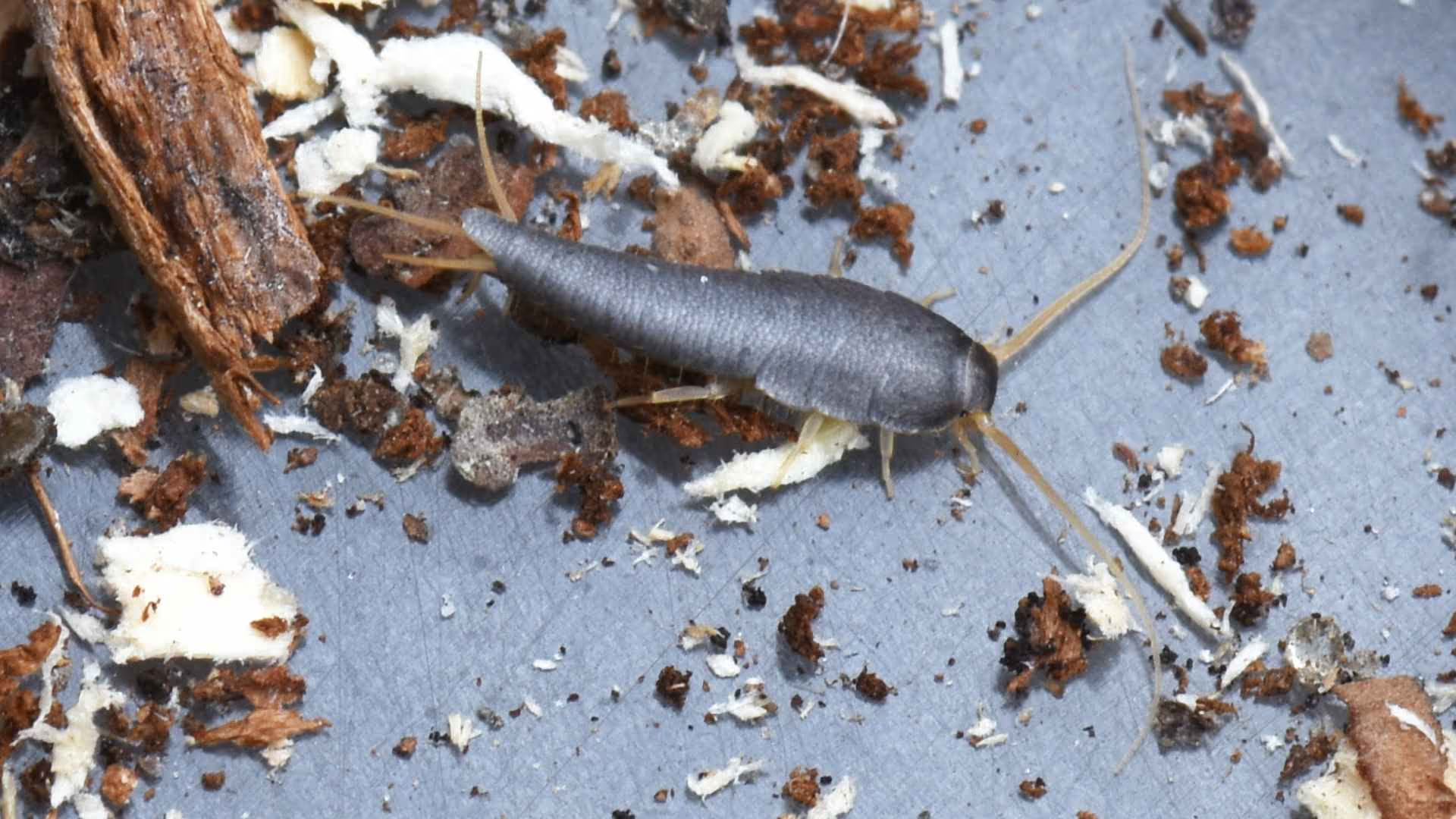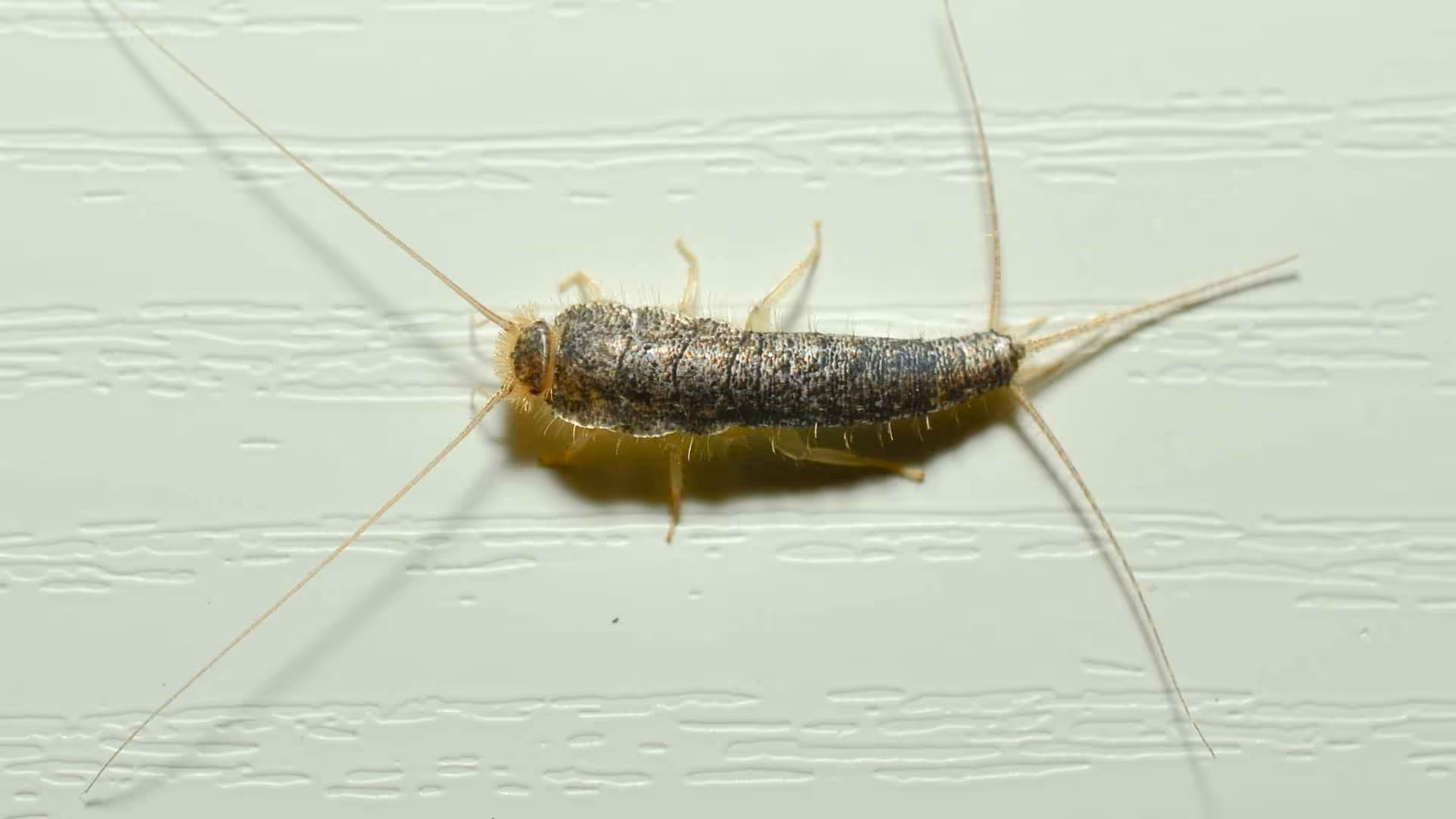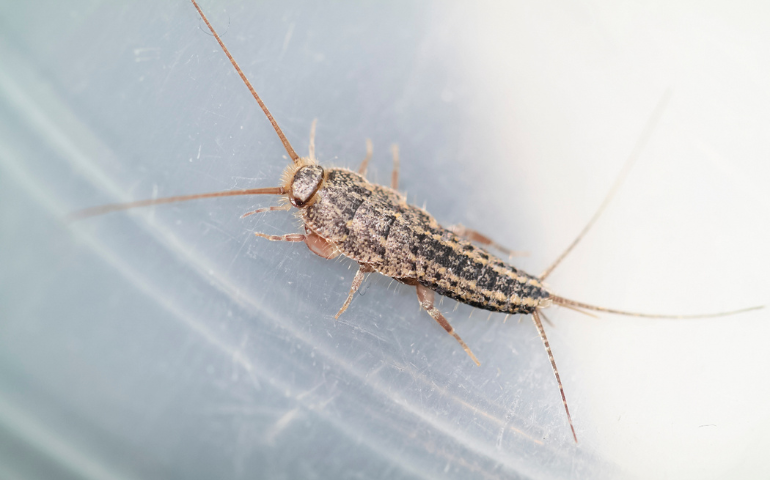What are Silverfish?
Silverfish are small, wingless insects belonging to the order Zygentoma, known for their distinctive appearance and behavior. With teardrop-shaped bodies covered in scales that lend a silvery or grayish sheen, silverfish move in a characteristic wiggling, fish-like manner. They possess two long antennae for sensory perception and are nocturnal, preferring dark and damp environments. These scavengers feed on materials rich in starch, sugars, and proteins, such as paper, cardboard, and textiles. While not harmful to humans in terms of biting or transmitting diseases, their feeding habits can lead to damage of items like books and clothing.
What Kinds of Silverfish Are There?

This species is often encountered in homes and is known for its silvery-gray color and carrot-shaped body. Common silverfish are nocturnal and feed on a variety of materials, including paper, cardboard, glue, and textiles.

Also known as the long-tailed silverfish, this species is similar in appearance to the common silverfish but has a longer and more slender body. Gray silverfish are also active at night and prefer humid environments.

Four-lined Silverfish(Ctenolepisma quadriseriata) have 4 distinct lines across their back either vertically or horizontally.
Why Do You Get Silverfish In Your Home?
Silverfish are attracted to homes for various reasons, and understanding these factors can help in preventing and managing infestations. Here are common reasons why silverfish may enter and thrive in homes:
High Humidity:
Silverfish are highly attracted to moisture, and environments with high humidity levels create favorable conditions for them. Areas like basements, bathrooms, and kitchens, where humidity tends to be higher, are particularly appealing to silverfish.
Food Sources:
Silverfish feed on materials rich in starch, sugars, and proteins. Items like paper, cardboard, glue, textiles, and even certain types of food can serve as food sources. They are often found in areas where such materials are present.
Warmth:
Silverfish are cold-blooded insects, and they seek warm environments. Homes with a stable temperature provide a comfortable habitat for them, especially during colder seasons.
Accessible Entry Points:
Silverfish can enter homes through small cracks, gaps, and openings in the exterior, such as around windows, doors, utility lines, and vents. Poorly sealed entry points make it easier for them to access indoor spaces.
Outdoor Vegetation:
If there are outdoor plants or vegetation in close proximity to the home, silverfish may use them as hiding spots and inadvertently make their way indoors.
Infested Items:
Silverfish can be introduced into homes through infested items such as books, newspapers, cardboard boxes, and second-hand furniture.
How Do You Get Rid Of Silverfish From Your Home?
Reduce Humidity:
- Silverfish are attracted to high humidity. Use dehumidifiers in damp areas like basements and bathrooms to reduce moisture levels.
- Ensure proper ventilation in areas prone to humidity.
Seal Entry Points:
- Inspect and seal any cracks, gaps, or openings in the exterior of your home, especially around windows, doors, utility lines, and vents.
- Use weather stripping on doors and windows to prevent silverfish from entering.
Remove Food Sources:
- Store food items in airtight containers to eliminate potential food sources for silverfish.
- Declutter areas where silverfish may find hiding spots, such as piles of papers, cardboard boxes, or old clothing.
Clean and Declutter:
- Regularly vacuum and clean areas where silverfish are likely to hide.
- Remove old papers, books, and cardboard from storage areas.
- Keep closets and storage spaces organized.
Natural Repellents:
- Use natural repellents such as cedar or sachets of dried herbs like lavender in areas where silverfish are commonly found.
- Diatomaceous earth can be sprinkled in cracks and crevices as a desiccant to help control silverfish.
Insecticides:
- Apply residual insecticides in cracks, crevices, and other hiding spots. Choose insecticides labeled for silverfish control.
- Consider using boric acid in powder form, applied in areas where silverfish are present. Be cautious and follow product instructions.
Professional Pest Control:
- If the infestation persists or is severe, consider seeking professional pest control services.
- Alta Pest control can assess the situation and provide targeted solutions based on the specific conditions of your home.
Are Silverfish Harmful?
While silverfish do not pose a significant health risk to humans, their presence can exacerbate existing respiratory conditions such as asthma and allergies. Additionally, silverfish may carry bacteria and other pathogens that can lead to illness if they come into contact with food or other surfaces in the home.
To minimize health risks associated with silverfish infestations, it’s important to keep your home clean and dry and address any infestations promptly. If you have respiratory issues or are otherwise sensitive to pests, consider seeking professional pest control services to ensure that your home is free from pests and potential health risks.
